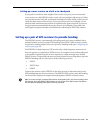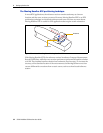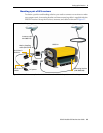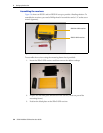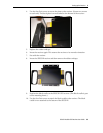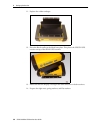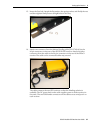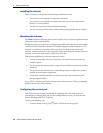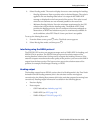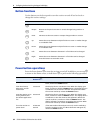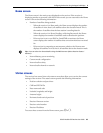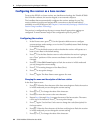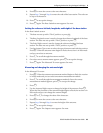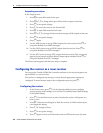
SPSx51 Modular GPS Receivers User Guide 59
Setting up the Receiver 5
2. Select Heading mode. The receiver display shows two extra settings for heading:
– Heading Adjustment. Enter a positive value in decimal degrees. The value is
applied to the raw heading value before it is output in the NMEA HDT
message or displayed on the front panel of the receiver. This value is used
when the two antennas are not mounted parallel to the vessel axis.
– Minimum Heading Solution. Enter the minimum requirement for the GPS
solution that will provide the heading value. The default of RTK Fixed
provides the highest precision, but in conditions of extreme multipath or
obstruction, an RTK Fixed solution may not be continuously available. In
such conditions, select RTK Float if a lower precision is acceptable.
To set up the Moving Base unit:
1. From the Home screen, press
L twice. The Mode screen appears.
2. Select Moving Base mode, and then press
L .
Interfacing using the NMEA protocol
The SPS551H GPS receiver can output messages such as NMEA HDT for heading, and
NMEA GGA for position. The SPS551H always reports the solution status of the
moving baseline solution that is being used to compute the heading. However, if the
external computer must know the exact quality of the position, you can use the NMEA
output from the base receiver. The base receiver reports the solution status of the
position, for example, Fixed Integer, Floating, or DGPS.
Heading output
The heading output from an SPSx51 receiver that is in Heading mode is the True North
Azimuth from the Heading antenna (this is the unit that receives moving base
corrections) to the Moving Base antenna (this is the unit that outputs the moving base
corrections). Heading output information is available in the following places:
• Receiver display
• Data outputs:
–GSOF Attitude (see Attitude, page 146)
– NMEA HDT (see HDT, page 124)
– NMEA AVR (see PTNL,AVR, page 125)



